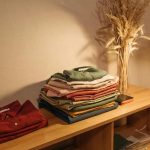Are you searching for a fabric that truly stands the test of time? Look no further than Poly Bond. This innovative material has been hailed as the ultimate fabric for durability, and for good reason.
Its unique composition combines the strength of polyester with the resilience of bonded fabric, creating a textile that can withstand the harshest conditions.
In this comprehensive guide, we will delve into the composition of Poly Bond, explore its strength and resilience, examine durability testing methods, compare it to other fabrics, and discuss practical applications.
Whether you're a seasoned professional or a discerning consumer, this exploration of Poly Bond will provide you with the mastery you seek in choosing durable fabrics.
Key Takeaways
- Poly Bond fabric is a blend of polyester and nylon fibers, resulting in a fabric that is durable and resistant to wrinkles, abrasion, and chemicals.
- Poly Bond fabric offers high durability and excellent resilience, making it ideal for demanding applications.
- Poly Bond fabric is commonly used in industrial settings, outdoor gear, performance wear, and medical textiles, enhancing safety and longevity.
- Poly Bond fabric provides exceptional strength, resistance to abrasion, and versatility, making it a strong contender for durability.
The Composition of Poly Bond
You often hear about the durability of Poly Bond fabric, and you may wonder what exactly it's made of. Well, let's delve into the composition analysis of this remarkable fabric.
Poly Bond is a blend of polyester and nylon fibers, carefully woven together to create a fabric that excels in strength and resilience. The manufacturing process involves melting the polyester and nylon polymers and then extruding them to form long, continuous fibers. These fibers are then spun into yarn and woven into a fabric using advanced weaving techniques.
The combination of polyester and nylon results in a fabric that isn't only exceptionally durable but also resistant to wrinkles, abrasion, and various chemicals.
The composition analysis of Poly Bond reveals a fabric designed to withstand rigorous use and harsh conditions. The manufacturing process ensures that the fabric retains its strength and shape, making it a popular choice for outdoor gear, workwear, and upholstery.
Understanding the composition and manufacturing process of Poly Bond allows you to appreciate the engineering behind its durability and versatility.
Strength and Resilience
Demonstrating exceptional strength and resilience, Poly Bond fabric stands out as a top choice for demanding applications. This is attributed to its advanced fabric technology, which combines the durability of polyester with the strength of nylon, resulting in a fabric that excels in long-term performance.
The unique composition of Poly Bond fabric enables it to withstand high levels of stress and strain, making it highly resilient in challenging environments. The fabric's ability to maintain its structural integrity over extended periods makes it an ideal choice for various demanding applications, from outdoor gear and workwear to industrial and military uses.
Poly Bond fabric's long-term performance is further enhanced by its resistance to abrasion, tearing, and fading. This exceptional durability ensures that the fabric maintains its strength and appearance even after prolonged use, making it a cost-effective solution in the long run. Additionally, the fabric's resistance to moisture and mildew adds to its longevity, ensuring that it remains reliable in diverse conditions.
Durability Testing Methods
When testing the durability of Poly Bond fabric, it's important to consider various factors such as material stress, abrasion resistance, and impact durability.
Material stress testing involves subjecting the fabric to different levels of tension to assess its ability to withstand pressure over time.
Abrasion resistance evaluation measures the fabric's ability to resist wear and tear from rubbing against other surfaces.
Impact durability assessment focuses on the fabric's ability to withstand sudden forces or impacts without tearing or breaking.
Material Stress Testing
Material stress testing evaluates the durability of fabrics through various methods. When comparing fabrics, performance evaluation is key to understanding how well a fabric will hold up over time. Here are some common material stress testing methods:
- Tensile Strength Testing: Measures the maximum stress a material can withstand while being stretched or pulled before breaking.
- Abrasion Resistance Testing: Evaluates a fabric's ability to withstand wear and tear through repeated rubbing or scuffing.
- Flex Testing: Assesses a fabric's resistance to bending and folding, simulating the stresses it may face during normal use.
Abrasion Resistance Evaluation
To assess the durability of fabrics, you can evaluate their abrasion resistance through specific testing methods. Abrasion resistance is a critical factor in determining fabric performance and durability.
The Martindale and Wyzenbeek methods are commonly used to measure abrasion resistance. The Martindale method involves rubbing a fabric in a circular motion with an abrasive material, while the Wyzenbeek method uses a back-and-forth motion. Both methods simulate the wear and tear that fabrics experience during daily use.
The number of cycles endured before visible damage occurs indicates the fabric's ability to withstand abrasion. Higher cycle counts suggest better abrasion resistance and, consequently, improved durability.
Impact Durability Assessment
You can evaluate fabric durability through impact durability assessment using standardized testing methods. This assessment helps determine the material strength and its ability to withstand sudden forces.
To conduct a comprehensive impact durability assessment, consider the following testing methods:
- Tear Resistance Testing: This evaluates the fabric's ability to withstand tearing forces, simulating real-world scenarios where the fabric may experience sudden impacts or pulls.
- Pendulum Impact Testing: This method measures the energy absorbed by the fabric when impacted by a swinging pendulum, providing insight into its impact resistance and toughness.
- Drop Testing: This involves dropping a weighted object onto the fabric from various heights to assess its resilience and ability to endure sudden impacts.
Comparing Poly Bond to Other Fabrics
When comparing fabrics for durability, consider the strength and resilience of Poly Bond against other materials. Poly Bond stands out when compared to cotton and polyester due to its exceptional durability in different environments. Let's examine a comparison of Poly Bond, cotton, and polyester:
| Fabric | Durability | Resilience | Cost Effectiveness |
|---|---|---|---|
| Poly Bond | High | Excellent | Moderate |
| Cotton | Low | Low | High |
| Polyester | Moderate | Moderate | Moderate |
Poly Bond fabric offers high durability and excellent resilience, making it suitable for various demanding environments. In contrast, cotton has low durability and resilience, but it is cost-effective. Polyester falls in between Poly Bond and cotton in terms of durability and resilience, while also being moderately cost-effective. When considering the cost-effectiveness versus durability, Poly Bond provides a good balance, making it a worthwhile investment for long-term use. Therefore, when comparing fabrics for durability, Poly Bond emerges as a strong contender due to its exceptional durability and resilience across different environments.
Practical Applications of Poly Bond
In practical applications, Poly Bond fabric demonstrates its durability and resilience across a range of demanding environments.
- Industrial Applications
Poly Bond fabric is extensively used in industrial settings due to its exceptional strength and resistance to abrasion. It's employed in manufacturing protective clothing, conveyor belts, and other industrial equipment covers, where durability is paramount.
- Outdoor Gear
Outdoor gear such as backpacks, tents, and awnings benefit from the ruggedness of Poly Bond fabric. Its ability to withstand harsh weather conditions and resist tearing makes it an ideal choice for outdoor enthusiasts and professionals alike.
- Performance Wear and Medical Textiles
In the realm of performance wear, Poly Bond fabric is favored for its ability to endure rigorous physical activity while providing comfort and flexibility. Additionally, its application in medical textiles, such as surgical gowns and drapes, underscores its reliability in critical healthcare environments.
Poly Bond fabric's versatility and strength make it a go-to material across diverse industries, ensuring longevity and performance in challenging circumstances.
Tips for Caring for Poly Bond Products
Proper maintenance is essential for preserving the longevity and performance of Poly Bond products. Here are some tips for caring for your Poly Bond items:
Caring for Poly Bond Products
| Washing Instructions | Stain Removal | Storage Tips | Ironing Techniques |
|---|---|---|---|
| Machine wash in cold water with similar colors. Avoid bleach and fabric softeners. | Immediately blot stains with a clean cloth. Avoid rubbing to prevent spreading. | Store in a cool, dry place away from direct sunlight to prevent discoloration or damage. | Use a low heat setting and iron inside out to prevent shine or damage to the fabric. |
Following these washing instructions will help maintain the integrity of the fabric. For stain removal, it's crucial to address stains promptly and with care to avoid damaging the fabric. Proper storage is essential to prevent any long-term damage, while ironing techniques can help retain the fabric's original appearance.
Frequently Asked Questions
Can Poly Bond Fabric Be Used for Outdoor Applications, Such as Outdoor Furniture or Awnings?
Yes, Poly Bond fabric is suitable for outdoor applications like outdoor furniture and awnings. It offers excellent outdoor durability, weather resistance, and outdoor performance. Proper maintenance and care can ensure its longevity. Additionally, it's recyclable at the end of its life.
Is Poly Bond Fabric Resistant to Mold and Mildew?
Poly Bond fabric is highly resistant to mold and mildew, enhancing its durability. Additionally, it provides excellent color retention and breathability. These qualities make it an ideal choice for outdoor applications, ensuring long-lasting performance in various weather conditions.
What Is the Average Lifespan of Poly Bond Fabric in Comparison to Other Durable Fabrics?
When comparing lifespans of fabric materials, it's important to consider the fabric applications and durability requirements. Understanding the specific needs of your project will help in determining the ultimate fabric for durability.
Can Poly Bond Fabric Be Recycled or Repurposed at the End of Its Lifespan?
Yes, Poly Bond fabric can be recycled and repurposed at the end of its lifespan. Recycling options include breaking down the fabric into raw materials for reuse, and repurposing ideas involve transforming it into new products.
Are There Any Special Washing or Maintenance Instructions for Poly Bond Fabric?
For special care of Poly Bond fabric, follow these washing instructions and maintenance tips to maximize durability. Its mold resistance and lifespan make it ideal for outdoor applications. Recycling options at the end of its life are available.
- Why Open-Weave Scrim Is the Secret to Stunning Event and Canopy Designs - June 26, 2025
- Creating Large-Scale Art Installations With Scrim Fabric - June 26, 2025
- Scrim Fabric in Upholstery: Understanding Its Use as a Backing Material - June 26, 2025





